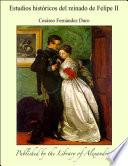
Busca tu ebook....

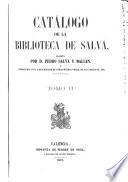
Catálogo de la Biblioteca de Salvá, escrito por Pedro Salvá y Mallen, y enriquecido con la descripcion de otras muchas obras, de sus ediciones, etc
Autor: Pedro Salvá Y Mallen
Número de Páginas: 912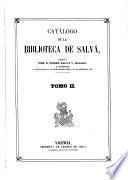
Catálogo de la biblioteca de Salvá
Autor: Pedro Salvá Y Mallen
Número de Páginas: 918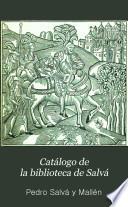
Catalogo de la biblioteca de Salva
Autor: Pedro Salvá Y Mallen
Número de Páginas: 918![Catalogus librorum doctoris ... Joach. Gomez de la Cortina, march. de Morante [the compiler] qui in ædibus suis exstant](https://cdn1.bibliotecadigital.org/images/libro/catalogus-librorum-doctoris-joach-gomez-de-la-cortina-march-de-morante-the-compiler-qui-in-dibus-suis-exstant-id-figCAAAAQAAJ.jpg)
Catalogus librorum doctoris ... Joach. Gomez de la Cortina, march. de Morante [the compiler] qui in ædibus suis exstant
Autor: Joaquín Gómez De La Cortina (marq. De Morante.)
Número de Páginas: 1206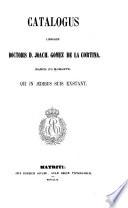
Catalogus librorum doctoris D. Joach. Gomez de la Cortina, march. de Morante, qui in ædibus suis exstant: S-U. 1859
Autor: Joachím Gómez De La Cortina Morante (marqués De)
Número de Páginas: 1210
Catalogus librorum doctoris D. Joach. Gomez de la Cortina, march. de Morante, que in aedibus suis exstant
Autor: Joachim Gomez De La Cortina Morante (marqués De.)
Número de Páginas: 1214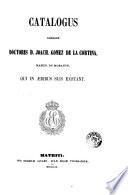
Catalogus librorum doctoris D. Joach. Gomez de la Cortina, march. de Morante, qui in aedibus suis exstant, 5
Autor: Joaquín Gómez De La Cortina Morante
Número de Páginas: 1204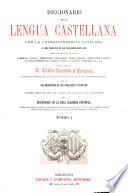
Diccionario de la lengua castellana
Autor: Delfín Donadíu Y Puignau
Número de Páginas: 1076
Revista de España
Número de Páginas: 680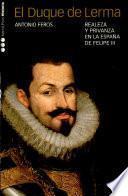
El Duque de Lerma
Autor: Antonio Feros
Número de Páginas: 526
L'art de gouverner
Autor: Antonio Pérez
Número de Páginas: 506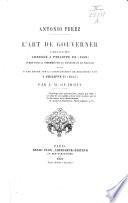
L'art de gouverner
Número de Páginas: 518
L'art de gouverner
Autor: Antonio Pérez (secrétaire De Philippe Ii D'espagne.)
Número de Páginas: 506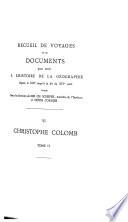
Christophe Colomb
Autor: Henry Harrisse
Número de Páginas: 650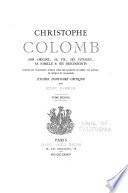
Christophe Colomb; son origine, sa vie, ses voyages, sa famille et ses descendants, d'apres des documents inedits tires des archives de Genes, de Savone, de Seville et de Madrid; etudes d'histoire critique, par Henry Harrisse
Autor: Henry Harrise
Número de Páginas: 648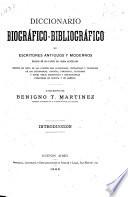
Diccionario biográfico-bibliográfico de escritores antiguos y modernos nacidos en los países del habla castellana
Autor: Benigno Teijeiro Martínez
Número de Páginas: 110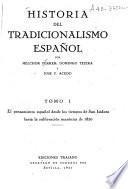
Historia del tradicionalismo español
Autor: Melchor Ferrer
Número de Páginas: 988
Indice de documentos útiles a la biografía
Autor: Narciso Alonso Cortés
Número de Páginas: 80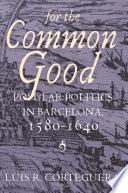
For the Common Good
Autor: Luis R. Corteguera
Número de Páginas: 250On June 7, 1640, the viceroy of Catalonia was stabbed to death on a Barcelona beach. By Christmas, several more royal officials of the Spanish principality had been assassinated. In the wake of these and other violent acts committed by the "people"—a term used for artisans—the Catalans severed their allegiance to the Spanish monarchy and elected Louis XIII of France their new king. The first English-language book to explore the political beliefs and behavior of early modern craftsmen, Luis Corteguera's work offers a dramatically new account of the origins of the Catalan revolt, the longest rebellion in seventeenth-century Spain.Drawing on his extensive research in Barcelona's archives, Corteguera examines how the political actions, ideas, and language of Barcelona's craftsmen shaped the relations between the Spanish monarchy and Catalonia in the decades leading to the insurrection. Artisans made up over half of the population of Barcelona, the political center and largest city of Catalonia. The Mediterranean port had a long history of active popular politics. Artisans sat in the city council, formed the core of the principality's largest militia, and participated in protests...
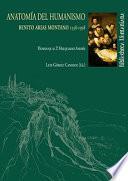
ANATOMÍA DEL HUMANISMO
Autor: GÓmez Canseco, Luis
Número de Páginas: 478Con motivo del IV centenario de la muerte de Benito Arias Montano, la Universidad de Huelva organizó un congreso internacional al que acudieron algunos de los principales estudiosos montanianos. Este libro recoge las aportaciones del encuentro, dedicadas a uno de los principales estudiosos de la teología hispánica como Melquíades Andrés Martín.
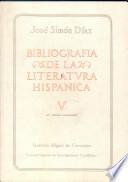
Bibliografía de la literatura hispánica
Autor: José Simón Díaz
Número de Páginas: 958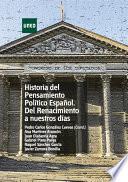
HISTORIA DEL PENSAMIENTO POLÍTICO ESPAÑOL. DEL RENACIMIENTO A NUESTROS DÍAS
Autor: GonzÁlez Cuevas Pedro Carlos , MartÍnez ArancÓn Ana , OlabarrÍa Agra Juan , Plata Parga Gabriel , SÁnchez GarcÍa Raquel , Zamora Bonilla Javier
Número de Páginas: 460Este manual intenta analizar la trayectoria del pensamiento político español desde una perspectiva no abstracta, sino contextualista. Es decir, que los planteamientos filosóficos y políticos descritos en el texto han de verse en su contexto histórico y considerarse como producto de un fase concreta de la historia de la sociedad en que se produjeron, en este caso la española, desde el Renacimiento hasta el final del régimen político acaudillado por el general Francisco Franco. Y es que las ideas políticas y/o filosóficas separadas del contexto que les dio vida, pierden su poder y su racionalidad.
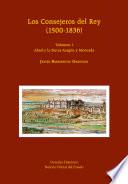
Los Consejeros del Rey (1500-1836). Volumen I. Abad y la Sierra-Aragón y Moncada
Autor: Javier Barrientos Grandon
Número de Páginas: 1103En esta magna obra, por su extensión y contenido, Javier Barrientos Grandon efectúa un recorrido por el sistema de gobernación de la monarquía española, mediante el examen de los personajes que se integraron en el sistema polisinodial o de los consejos. Por orden alfabético, y para el período 1500-1836, la estructura de cada biografía asume un modelo general que, con las variaciones accidentales derivadas de la naturaleza peculiar de cada consejo y de los datos y noticias que ha sido posible adquirir, gira en torno al oficio y la jurisdicción. Este criterio rector determina que su estructura no sea necesariamente cronológica y, así, las biografías cubren los siguientes ámbitos: de la identidad de la persona del consejero (nombre, títulos y dignidad);de la naturaleza del consejero (origen y patria); de la suficiencia del consejero (edad y cualidades del alma y del cuerpo); de la muerte del consejero y del oficio como perpetuo; de la familia del consejero (méritos y servicios de familia); de los méritos y servicios del consejero en cuanto a letras, armas y papeles y, eventualmente, dignidades en la iglesia; de su elección e ingreso y del cese en el oficio. Los datos ...
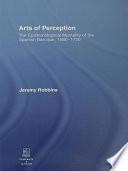
Arts of Perception
Autor: Jeremy Robbins
Número de Páginas: 301Arts of Perception offers a new account of a key period in Spanish history and culture and a fundamental reassessment of its major writers and intellectuals, including Gracián, Quevedo, Calderón, Saavedra Fajardo, López de Vega, and Sor Juana. Reading these figures in the context of European thought and the new science, and philosophy, the study considers how they developed various ‘arts of perception’ - complex perceptual strategies designed to overcome and exploit epistemic problems to enable an individual to act effectively in the moral, political, social or religious sphere. The study takes as its subject the distinctive epistemological mentality behind such ‘arts of perception’. This mentality was fostered by the creative interaction of scepticism and Stoicism, and found expression in the key concepts ser/parecer and engaño/desengaño. The work traces the emergence, development, and impact of these concepts on Spanish thought and culture. As well as offering new interpretations of specific major figures, Arts of Perception offers an interpretation of the mentality of an entire culture as it made the fraught transition to intellectual modernity. As such it ranges...

La tradición política española
Autor: Jerónimo Bécker
Número de Páginas: 224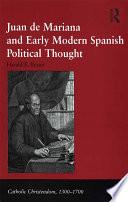
Juan de Mariana and Early Modern Spanish Political Thought
Autor: Harald E. Braun
Número de Páginas: 233The Jesuit Juan de Mariana (1535-1624) is one of the most misunderstood authors in the history of political thought. His treatise De rege et regis institutione libri tres (1599) is dedicated to Philip III of Spain. It was to present the principles of statecraft by which the young king was to abide. Yet soon after its publication, Catholic and Calvinist politiques in France started branding Mariana a regicide. De rege was said to empower the private individual to kill a legitimate king. Its 'pernicious doctrines' were blamed for the murder of Henry IV in 1610, and it was burned at the order of the parlement of Paris. Modern historians have tended to build on this interpretation and consider De rege a stepping stone towards modern pluralist and democratic thought. Nothing could be further from the truth. The notion of Mariana as an uncompromising theorist of resistance is in fact based on the distorted reading of a few select sentences from the first book of the treatise. This study offers a radical departure from the old view of Mariana as an early modern constitutionalist thinker and advocate of regicide. Thorough analysis of the text as a whole reveals him to be a shrewd and...

Boletín de la Real Academia Española
Autor: Real Academia Española
Número de Páginas: 564Opciones de Descarga
Últimos libros y autores buscados
Libros reeditados
- Adivinanzas - Carlos Silveyra
- Las LLaves De Raquel - Esteban Cichello Hubner
- Lo Que Hay - Sara Torres
- Zen Coaching - Carril Obiols, Javier
- Anales De La Universidad De Chile ... - Universidad De Chile
- Fausto (edición Bilingüe) (Los Mejores Clásicos) - Johann Wolfgang Von Goethe
- Manos De Primavera - Federico García Lorca
- Siempre En Mi Corazón - Jo Goodman
- Empresarios Y Estado En Argentina - Claudio Belini
- Visiones Interdisciplinarias De La Justicia Terapéutica En México - Fernando Cano Valle